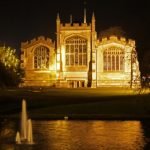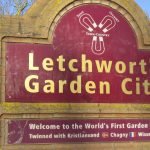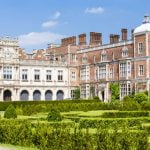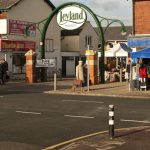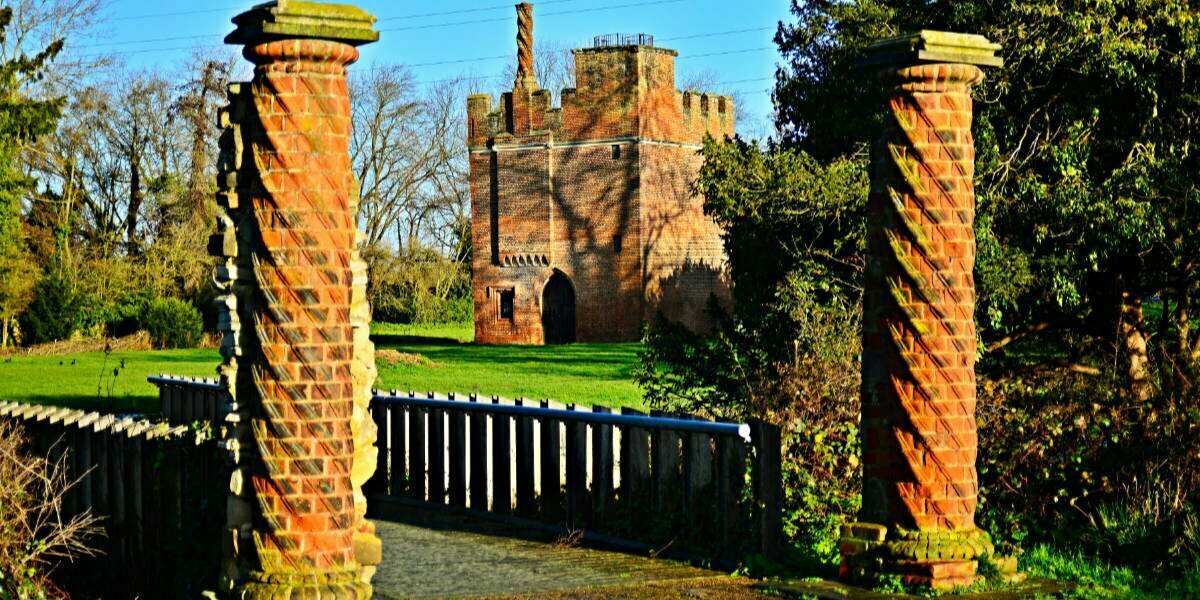
Hoddesdon. The Hertfordshire town with two train stations.
Just east of the Prime Meridian you will find the town of Hoddesdon. This town lies in Broxbourne, in Hertfordshire, and has about 40 thousand souls living in it. The town dates back to Anglo-Saxon times and has a mention in the Domesday Book, so it’s pretty ancient. In our quest to review all the hundreds of towns in England, we are now covering towns of this size. Let’s find out what we know about it and see if we can’t uncover a lost ark, a hidden treasure, or just some fruity local gossip.
Here’s everything you need to know about Hoddesdon in one place. We’ll try to make it a fun read.
The Early Days of Hoddesdon
Hoddesdon took its name from either a Dane or a Saxon, sometime after the Romans invaded and before the Normans got here. The town lies only 20 miles north of London, so the Roman roads to the north would pass nearby. This could have been enough to birth a settlement. The name of the town came from a Dane or Saxon named Hod. The suffix -don comes from the suffix -dun, which was the name of a small hill in early versions of English. The person’s name may even have been Hodda as some historians believe. Whoever he was, he owned that hill.
The first written record of the town is in the Domesday Book, but even though it has a “Roman Street,” we couldn’t unearth any Roman villas in the area. We can therefore assume that the town grew up later, as the result of a Dane settling after they Vikinged their way here.
The Doomsday Survey
During the Domesday Survey, the town had a reported population of about 350 people. This sounds small, but 350 people back in 1086 was an army. Many of the smaller locations in the Domesday Book had only two or three households, never mind 300 people. In fact, Hoddesdon had 67.5 households, making it one of the biggest 20% of all settlements in England at that time. Don’t let them fool you, it was never a tiny village.
There were 6 owners listed for the town in the Domesday Book – not quite the village that other sources say it was. You can view the entry in the open Domesday resource for yourself, here. One of the owners was King William himself, another belonged to Peter the Burgess. Geoffrey de Mandeville owned some of it, as did two counts: Eustace and Alan of Brittany. The last owner was a local man named Edward of Salisbury.
Between all of them, these men owned some astonishing wealth. Let’s do this list style to save time. They owned:
- Count Alan of Brittany – 2 villagers, 8 smallholders, one slave (yes, slave), 2 acres of land, meadows with 4 ploughs, and woodland worth 260 pigs. It was worth 22 pounds.
- Count Eustace of Bologne owned 3 smallholders, 1 meadow and a plough, and 50 pigs in a small woodland. It was worth 15 shillings a year.
- Edward of Salisbury owned 4 villagers, 2 smallholders, 5 cottagers, 2 slaves, 3 ploughlands, 2 teams of ploughmen, 3 acres of land, a meadow with 4 ploughs, woodland for 20 pigs, and a fishery. The land was worth 3 pounds.
- Geoffrey de Mandeville owned 3 smallholders, 2 cottagers, one slave, 1 ploughland and half a team to plough it, 1 meadow with one plough, and woodland enough to hold 50 pigs. It was worth 1 pound per year.
- Peter the burgess owned 1 villager, 2 cottagers, 2 slaves, 1.5 ploughlands, two ploughs in a meadow, and woodland for ten pigs. It was worth 1 pound per year.
- Lastly, the king himself owned 61 villagers, 1 freed man, 30 smallholders, 22 slaves, 8 Lord’s plough teams and 31.5 men’s plough teams, 120 acres of meadow, 9 wethers of pastureland, 840 pigs in woodland, a church, 3 cobs of cattle, 40 cattle, 195 pigs, and 193 sheep. The land was worth 60 pounds per year.
After the Domesday years, the town continued to grow steadily. By 1253 the king had granted a charter to hold both a weekly market and an annual fair. The weekly market in Hoddesdon runs to this day. The town was on the Roman road heading north and even had its own hospital run by the church at one point.
The town suffered under the Black Death in 1348-9. Like any other place in England, it lost 20% of its population thanks to that one period. In 1336 a man named William do la Marche received a license to build a chapel of ease.
Medieval Hoddesdon History
The plague would continue to be a problem for Hoddesdon residents down through the ages. In the 16th century and the 17th century, they experienced outbreaks of smallpox, cholera, and other plagues. The town suffered through 1603, 1612, 1625, and 1666. At some point during this time, the locals figured out bad water and no sewage was the cause. Nevertheless, piped water systems wouldn’t arrive until the Industrial Era. The town’s hospital opened in the 1400s just to the south of town. Locals called it the hospital of St Laud and St Anthony. It closed in the 1500s thanks to the dissolution of the monasteries sponsored by Henry VIII.
Queen Elizabeth I enlarged the town in 1560. She sought a charter and granted the town a bailiff and a warden. She spent much of her childhood in this area of the country, residing at the nearby Old Palace. The charter sponsored a free Grammar School in the area, based on the site of the old hospital. Sir William Cecil bought the old manor house in 1567 and two years later the queen gave him a neighbouring town. The title of Marquess de Salisbury passed to his descendant James in 1789.
In 1683 the town received a bad reputation. The Rye House Plot occurred in the local Rye House manor. The plot involved assassinating both King Charles I and his brother, the Duke who later became James I. Changes to the king’s travel plans were all that saved his life. This was a whig conspiracy and, as we know, thoroughly shook the royal house in the forthcoming civil war. The plot featured the king’s entourage passing along a small road near the Rye House. This is where they would kill him. Ten weeks later the perpetrators were arrested. This was one of those attempted assassinations where nobody is really sure what happened, or to what degree the assassins had even planned it.
Let’s take a momentary break from the history to take a look at some fun trivia from the town. Don’t worry, we’ll be back with the industrial period momentarily.
Hoddesdon Trivia
At this point, you may be suffering from history overload. Don’t panic though, we are here to rescue you. We like our readers to be comfortable. Here is all the juicy goss we could dig up about this sleepy town. You’d be surprised how many fun things happen here.
- Hoddesdon once hosted the 8th Congres International d’Architecture Moderne back in 1951.
- The town’s twin is Dinant, in Belgium.
- Hoddesdon Town FC was the first winner of the FA Vase Trophy. They beat Epsom & Ewell 2-1 in the final at Wembley
- Hoddesdon Business Park was built to hold an impressive 200 businesses and 5,500 employees. It’s supposed to be big enough to rival the town’s workforce.
- You can find a street market here every Wednesday and Friday, from 8-4 pm.
- The canal near Hoddesdon was originally a river and was canalised in the mid-1800s to make trade easier. The canal runs into the River Lea, and passes multiple other towns.
- Hoddesdon was once voted the 7th best place to live in Hertfordshire. Is that a win? Well given there are 37 sizable towns in the county we say yes!
Now that we’ve had a refreshing break – they say a change is as good as a holiday – let’s get back to learning the history of this wonderful Hertfordshire town.
The Industrial Era in Broxbourne
As of 1622, Rawdon House was the possession of Sir Marmaduke Rawdon. He was the one responsible for finally giving the town its own piped water system There’s a statue in the area known as the Samaritan Woman which he erected.
By 1870, after the whig plot, Rye House was in the possession of William Henty Teale. William built a pleasure garden where he displayed the Great Bed of Ware. This is exactly what it sounds like. It is a giant bed over 3 metres wide. Crafted in 1590, those who visited and slept in it carved their initials or apply a wax seal. The famous bard mentions the bed in Twelfth Night, so famous was it in Shakespeare’s time. The bed still exists. You can visit it at the Victoria and Albert Museum in London.
The chapel saw replacement in 1732 but the bed remained in the house until moved in the 20th century. The house itself fell to disrepair. The chapel became the parish church in 1844, although we know from the Domesday survey that there was a church here before that – more than one.
In the 1700s, brewing became one of the town’s main sources of income. This lasted until the 1930s when most of the breweries were demolished. The breweries were on Brewery Road. Locals produced flour ground in the mills here, and malt grew here. Locals shipped it to London downstream on the Lea. The town held a weekly Hops Market, which eventually stopped in the 20th century. The standard market still exists, though.
Modern Day Hoddesdon
In 1801, the population of Hoddesdon was 1,227 people. Although it was once a thriving country town, it had fizzled in significance. In 1841, a school for boys opened and oil lamps lit the streets. By 1848, gas replaced oil and a waterworks company opened in 1876. William Gosse, the explorer, was born here in 1842.
Brewing fell away in the early 1900s, with the first cinema opening in 1913. Two years later, men from the town would go off to help the war effort. The war memorial opened in 1921, commemorating their names. In 1923 the town received electric street lighting. A library opened in the thirties.
Hoddesdon expanded in 1935 so it included both Broxbourne and Wormley. The town centre as it is now opened in 1967. The government built a bypass in 1974 and the first carnival of light began in 2007.
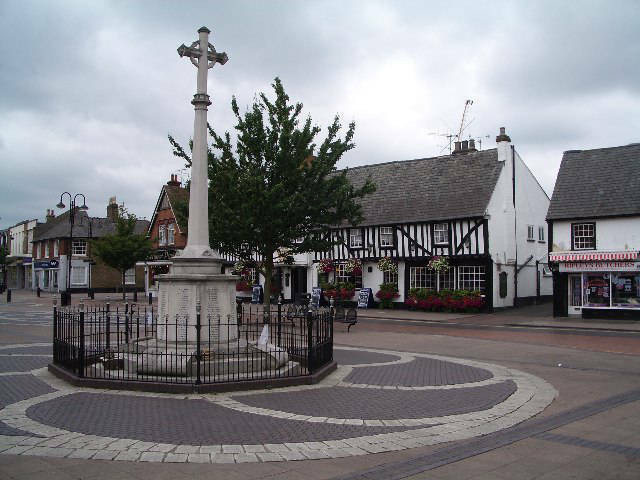
Image: By Chris Hunt, CC BY-SA 2.0
Modern Hoddesdon is a lovely place that retains the countryside charm of the original town. It’s London, but it’s not London. It’s an excellent commuter town where the people live in a wealthy area of the country. It’s a wonderful place to raise your kids, but it’s a really wonderful place to visit for your staycation.
Let’s move on from history since we are all up to date. We’ll cover some famous faces from Hoddesdon then we’ll move on to all the wonderful things you can see and do here. You’d be surprised by the pleasant attractions this far north of the city.
Famous People from Hoddesdon
Ever wondered if there were famous people living in Hoddesdon? We can tell you. There could be a celebrity right under your very nose. Let’s check with our list of local celebrities in your area:
- Brothers Arthur James Balfour – the former prime minister – and Francis Balfour. Francis was a comparative embryologist and a morphologist, making him infinitely more useful than his sibling.
- John Loudon McAdam lived here for a while. He was an important roadbuilder and engineer.
- Hugh Paddick the comedian was from here.
- Colin Pratt, speedway star.
- Lena Zavaroni the entertainer spent the last days of her life enjoying the area.
- And Gino D’Acampo lives here. As if it couldn’t get any cooler.
That’s a decent blend of famous faces and second class celebrities. It’s certainly enough to be sinking your teeth into. Hoddesdon has a reputation to protect as part of the Greater London Metropolitan Area. It seems that the closer your town is to the capital, the longer the list of celebs to look out for.
Best Attractions in Hoddesdon
We have finally reached the part of the article where you learn about the best things to see and do when you visit the town. Hoddesdon has some great attractions. Stay tuned to find out what they are.
Historic Sites and Landmarks
Although Rye House is long diminished, you can still find one of the gatehouses in a local park. Rye House was the site of the small lane where King Edward passed by, almost earning his own assassination. The gatehouse is all that remains of the fortified manor house built in the 15th century. This building is Grade I listed and rumour has it there are secret tunnels underneath.
You can’t come to Hoddesdon without visiting the Speedway Museum. Situated outside of town in Epping Forest to the west, this museum is well worth the visit. It tells you everything you ever wanted to know about racing. It’s popular among fans. You’ll find it in the Paradise Wildlife Park.
Galleries and Museums
The area has its own museum, situated in what was once Broxbourne. Lowewood Museum is the borough museum, meaning that if you have family to trace or a book to write about local history, this is where you go. The museum doesn’t charge entry into the exhibits but may ask for donations. There’s a tea room inside that is popular with the locals.
There are a few art galleries in the area for those that want to take home some fine art. Try the Lowewood Museum, which does have some local works and fine paintings. Otherwise, check the Gallery at Parndon Mill in Harlow. Artisan Fine Art have their headquarters in Nazeing, too.
Outdoor Attractions
The aforementioned Rye House gatehouse sits inside the Lea Valley Regional Park. This area is a fantastic place to pass the time on weekends. There is space for ball sports, picnics and even canoeing down the River Lea, if you have the equipment. The River Lea Country Park has plenty of gardens for you to browse, access to watersports in the reservoir, and many more fun attractions. There are even animals to pet.
The Rye House Speedway track is another local attraction. Speedways have become popular in England and Wales in recent years. Demolition derbies allow people to trash old cars in entertaining ways, while locals appreciate races of different vehicles. You can visit and see both here.
Nature Reserves
If you are a nature lover or a keen Twitcher then Hoddesdon has plenty to offer. Keen birdwatchers should head for RSPB Rye Meads which has around ten birdwatching hides and a visitor centre. There are also a number of laid out trails to explore and it has a car park and toilet facilities. It is open 7 days a week (closed over Christmas) between 9.00 & 5.00. It is a haven for aquatic birds so if you have a hankering to see a Kingfisher or a Gadwall then this is the place to go!
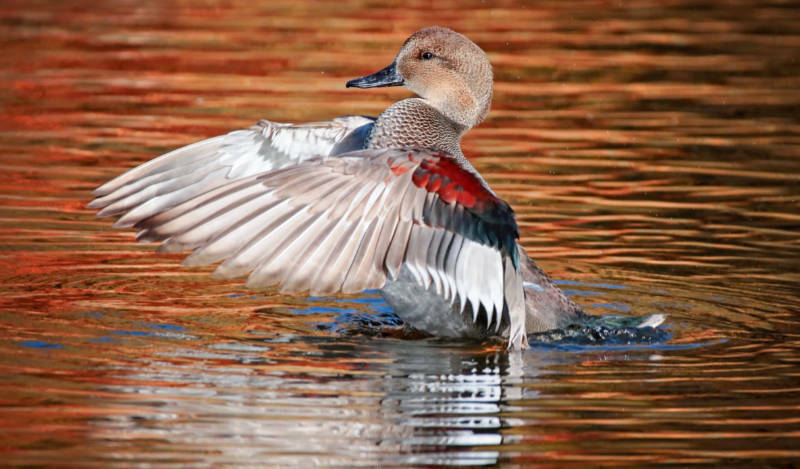
A Male Gadwall showing off!
Image: Annette Shaff/Shutterstock.com
You can get more details here.
A visit to Danemead Nature Reserve should also be on the list and offers some great scenic walks through beautiful old forests. Danemead is an area of Special Scientific Interest and is run by the Herts and Middlesex Wildlife Trust, so do give generously for their decent work.
Sports and Recreation
Recreationally speaking, there is no better attraction in town than the Spotlight theatre. This auditorium comfortably sits 500 people and reopened in Feb 2022 after some refurbishments. It’s a lovely stage where you can catch performances by local groups and renowned acts alike. You will find it in the former Broxbourne town hall building, at the corner of Hoddesdon High street. Book your tickets in advance during pant season because they fill up fast.
Take the kids to the Rye-Assic Adventure Park, which has a soft play area for the younger ones and an adventure play area for the older ones. The adventure park is part of the fun and attractions in the Rye House area. They do adult and child’s go-karting which is a ton of fun. You can book in for groups for parties or school visits, too.
Hoddesdon Town Football Club is the local players. They won the FA Vase back in 1975 and have been striving to do so again ever since. The team began playing in 1879, only 4 short years after the first English football league formed. They play at Lowfield and usually involve themselves with Essex leagues.
As for golfing, no English town is short on choices. Hoddesdon has the Hertfordshire Golf and Country club to its west, the Golf Foundation store in town, and the Broxbourne golf complex to the south edge of town.
Hoddesdon doesn’t have their own rugby club but you can visit the Hertford RFC club, instead.
Shopping and Retail
Hoddesdon doesn’t have many big shopping centres. However, London is only 20 miles to the south. The best shops here are in the town centre.
Other Notable Broxbourne Attractions
In this section of our tour guides, we like to notice what the surrounding areas have to offer. If you are interested in finding other things in the area to see and do, this list will help.
- Take your teens to the Rye House Laser Combat zone and let them run riot.
- Visit the White Swan for a pint.
- Go for a walk in Hoddesdon woods.
- Visit the RSPB in Rye Meads, to the north of town.
- Go see what The Gaf is all about. We’re not sure. Tell us about it when you come back.
As you can see, you’ll find something to do here no matter what your taste and style. All that remains is for you to find the place.
How to get to Hoddesdon?
Now we have finally reached the part of the article where we give you excellent directions. As good as they are, you might wish to download a map.
By Road
Two choices: go up the M1 and head east, or up the M11 and head west. Follow the M25 either way.
By Rail
There are two train stations in Hoddesdon because why not. You can get there via Rye House Station or through Broxbourne Railway Station.
By Air
The nearest airport is London Stansted.
By Sea
Alas, me hearties, you are landlocked.
Got Five More Minutes?
If you have a few more minutes left on your break, you can always check out our other local attraction guides. We can send you to Surrey, browse the rest of Broxbourne, or help you navigate Herts. Follow us on Facebook to stay up to date and to appeal for us to review your town.
